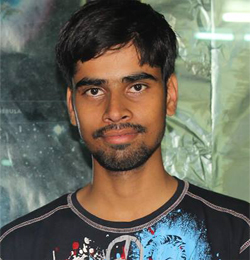For the club which has already won accolades from all and sundry, by making the country’s first student in-house planetarium and earning itself a mention in the Limca Book of World Records, sky is the only limit. Let’s have a look what they are up to this summer.
First on the list is an Interactive Planetarium Show, which was also the club’s formal entry to the National Meet on Role of Planetaria in Science Communication. The ‘interactivity’ here refers to the use of hand gestures, made possible by Kinect based live interaction and sky simulating software like Stellarium and World Wide Telescope. Next, the Cosmic Ray Detector 2.0 aims to construct a CRD to detect cosmic rays on earth’s surface with minimum expenditure and perform experiments to study the behaviour and properties of cosmic rays, like their energy, e/m ratio and also the dependence of the count rate on temperature, altitude and zenith angle.

Photometry aims to study and plot the periodic fluctuation in the intensity of five variable stars. The project will also try to determine the extent of use of video eyepiece for photometry and will slightly touch upon the area of Lunar Photometry. Multi-Body Simulation aims at simulating the orbits of celestial objects in n-body system. The program takes as input the co-ordinates of the bodies, the masses of the bodies, their velocities and the approximation time of the simulation. It then calculates the parameters for simulation using a C program and then simulate the orbit of the bodies using MATLAB.
Radio Data Analysis involves analysis of the data collected from finest radio telescopes like GMRT and NASA. This requires the knowledge of Cosmology, Statistical Analysis, Cosmological distances, Radio Astronomy, MATLAB & C. Data will then examined, reviewed, and compared with observations of other Radio analyzing groups. GoTo Binocular Mount is an effort to make an automatic binocular mount that will set itself to the position of star which you wish to see. Helpful when someone doesn’t remember the positions of star. This is an Alt-Az mount controlled by 2 motors which are further controlled by Atmega 16. Stellarium (software which simulates the night sky) API is being used to input the co-ordinates of the desired star.
Further information can be found at: Astronomy Club Projects




